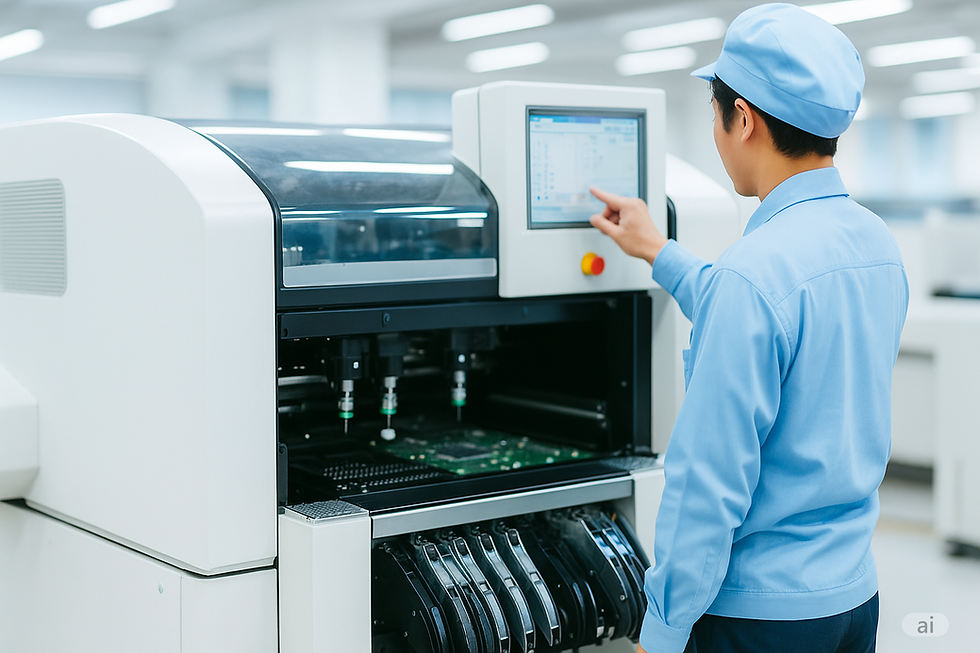Master SMT Assembly: Essential Guide to Boosting Production Process
- Regulus Marketing
- Sep 9
- 4 min read
In today's fast-paced world, electronics manufacturers are constantly seeking ways to streamline production processes. One of the most effective methods for achieving this goal is through surface mount assembly techniques. These techniques have revolutionized the electronics industry by offering a faster, more efficient way to produce circuit boards and electronic devices. In this article, we will explore the benefits of using surface mount technology (SMT), discuss the various methods involved, and how to implement these strategies in your production process.

SMT Assembly Techniques
SMT assembly techniques involve attaching electronic components directly onto the surface of printed circuit boards (PCBs). This method differs from traditional through-hole assembly, where components are inserted into holes and soldered on the other side. A major advantage of SMT assembly is that it allows for a higher density of components on the PCB, improving overall performance and compactness.
Advantages of SMT Assembly in Production
Efficiency: One of the most significant benefits of SMT assembly is the speed of production. SMT components can be placed on the board faster than their through-hole counterparts. Machines used for SMT assembly can arrange components in a fraction of the time it would take to perform manual assembly. For example, high-speed placement machines can operate at speeds exceeding 50,000 components per hour.
Reduced Size and Weight: Since SMT assembly uses smaller components, it enables designers to create lighter and more compact products. This is particularly important in industries such as consumer electronics, where space is at a premium.
Automated Processes: The adoption of SMT assembly paves the way for automation. Automated Pick and Place machines streamline the process, which not only increases productivity but also minimizes errors that can occur with manual assembly.
Cost-Effective: While the initial investment in SMT assembly machinery may be more significant compared to traditional methods, the long-term savings are substantial. The reduction in labor costs, combined with improved production speeds, can lead to a higher return on investment.

Implementing SMT Assembly in Your Production Process
To take full advantage of SMT assembly techniques, consider the following steps:
Assess Your Needs: Evaluate your current production process to determine if transitioning to SMT assembly is beneficial. Analyze production volume, component types, and market demands.
Invest in Quality Equipment: Select high-quality SMT assembly equipment. Look for machines that offer precise placement, quick adjustments, and are user-friendly. This ensures that you are not only choosing a machine but also investing in your company's future efficiency.
Train Your Team: Provide training to your staff on how to operate the new SMT assembly equipment. Proper training improves overall safety, reduces malfunction, and enhances productivity.
Quality Control: Implement stringent quality control measures. SMT assembly production can sometimes lead to issues, such as misalignment or insufficient solder. Regular inspections and monitoring ensure that products meet the specified standards throughout the production cycle.
Adopt Continuous Improvement Practices: Finally, engage in practices such as Lean or Six Sigma methodologies. Streamlining production isn’t a one-time effort; continuous monitoring and improvement ensure that your processes remain efficient and effective over time.

Challenges and Solutions in SMT Assembly
While SMT assembly techniques offer numerous benefits, some challenges can arise during implementation. Here are common issues and their solutions:
Placement Issues: Sometimes, components may not align correctly. This can occur due to machine calibration or component inconsistencies.
Solution: Regular calibration and maintenance of machines can prevent these issues. Additionally, using standardized components can reduce variability.
Soldering Problems: Inadequate soldering can lead to poor connections.
Solution: Investing in quality solder paste and adequate reflow ovens can ensure proper soldering. Monitoring temperatures and work conditions is essential.
Component Damage: SMT components can be fragile, prone to damage during handling and assembly.
Solution: Implement careful handling procedures and invest in anti-static equipment to protect sensitive components.
Supply Chain Challenges: Sourcing components can sometimes be difficult, especially with rising demand.
Solution: Building strong relationships with suppliers and diversifying your sources can mitigate risks associated with supply shortages.
Future Trends in SMT Assembly
The future of SMT assembly looks promising, with several trends emerging that may further streamline production:
Increased Automation: The trend towards automation is growing, with more manufacturers investing in intelligent systems and robotics to handle SMT assembly.
Enhanced Software Solutions: The integration of advanced software for design and simulation improves the planning and execution of SMT assembly processes.
Sustainability Initiatives: As companies focus on sustainable production, SMT assembly processes are evolving to reduce waste and enhance energy efficiency.
Miniaturization: The ongoing demand for smaller and more complex devices drives research into even smaller components and tighter assembly techniques.
The Final Word on SMT Assembly
Transitioning to SMT assembly techniques can greatly enhance your production capabilities. By investing in modern SMT assembly equipment, providing proper training, and adopting continuous improvement strategies, you can optimize your manufacturing process for better efficiency and profitability. The future of production lies in embracing technology and adapting to industry changes, ensuring that your company remains competitive in a rapidly evolving market.
Looking to boost production efficiency with advanced SMT assembly solutions? Contact our experts today to explore customized strategies that reduce costs, improve workflow, and future-proof your manufacturing line.





Comments